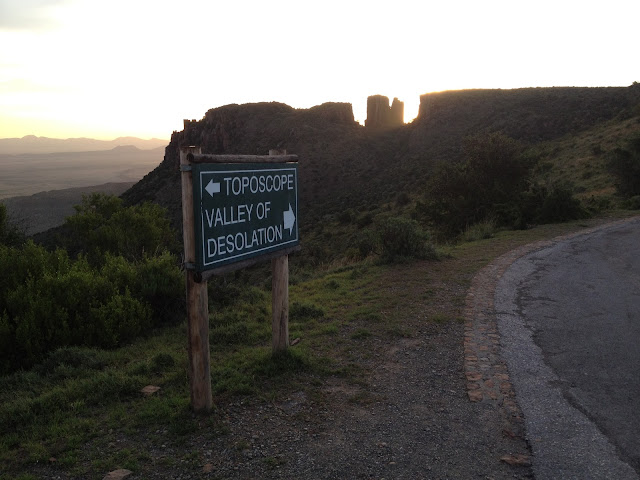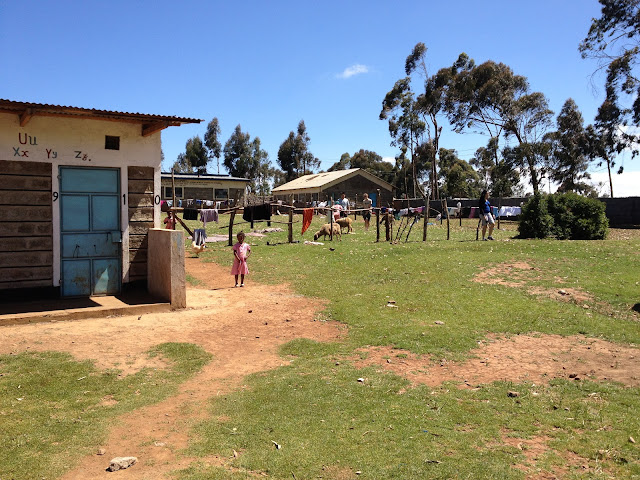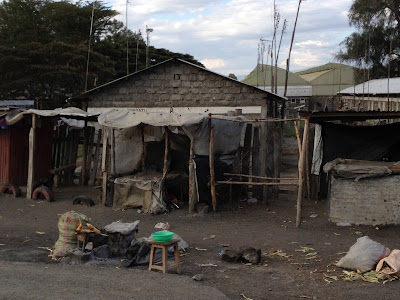I have had numerous requests for photos, so I selected several to include in this general post. Enjoy! And as always, if you have any questions or wish to provide feedback, please do not hesitate to contact me: bceppley@hacc.edu
_________________________________________________________________________________
When I was quite young, my parents instilled in their children the importance of helping others. A product of the Great Depression, they made certain we understood that working together builds a strong sense of community, and volunteering often provides the stimulus for creating a strong communal foundation. My parents were rarely idle. Their work ethic simply didn't allow time for idle moments. Although we differed on what that meant, exactly, I have no memory of my parents complaining of boredom or a lack of tasks to fill their days. I suspect that because of this, I find boredom to be intolerable.

Shortly after arriving in Bloemfontein, I discovered that Sundays were too empty for my liking. Enter The Cheetah Experience. After taking a tour of this breeding and educational facility which is used to promote awareness of the big cat species, I knew I wanted to volunteer. Luckily for me, my application was accepted, and I spent each Sunday learning about and interacting with tigers, leopards, caracels, lions, servals, cheetahs, and wolves and meerkats. Words can not describe the adrenaline rush when a four month old tiger chases you in a game of hide-and-seek. Or the serenity from passing the afternoon reading a novel while adult cheetahs lazily snooze on your lap. Each Sunday was somewhat surreal.....
 |
The tiger on the right, Aries, was an overgrown kitten. However, his paws could shred skin and clothes. He quickly became my favorite. And, no, tigers are not indigenous to South Africa. The founders of The Cheetah Experience were raising Aries and his sister Bella until they were six months old, after which they were moved to another facility breeding facility.
|
 |
| These adult cheetahs purr loudly and are extraordinarily gentle creatures. |
 |
A black spotted leopard....who was the devil! The common belief that such animals are called panthers is a misnomer. She could easily leap from the ground to your shoulders as you were strolling along---and frequently played this game. As an adult, she will be bred with another adult black spotted leopard at The Cheetah Experience.
|
 |
After passing a written exam to become a guide, I celebrated by gaining special permission to enter this one year old lioness' enclosure. This was a privilige: she was enormous and could easily kill an adult human. The platform on which she is relaxing is at eye level. I can't begin to express the emotions I felt by spending time with her. Another gift.
|
 |
Since 1900, more than 90% of the world's cheetah population has been wiped out. While the fur trade was a significant cause of the decimation, the survival rate of cheetahs in the wild is small. Mothers must leave their cubs to hunt and cubs are left alone, leading to a high mortality rate. This little one was born while I was there----and died one week later. She was the only one to survive a difficult birth.
|
 |
A six month old male lion.
For more information about the Cheetah Experience, visit them online at: www.cheetahexperience.com |

Kenya: the Mara Reserve
The tail end of the Great Migration. Wildebeest and Zebra as far as the eye can see!
Lazy hippos. Sadly, only moments before this pic was taken, a crocodile killed one of the very young hippos and pulled it through the water and down the river.....
Warthog loving the turf. They are unusual but fascinating creatures.
 |
| Wildebeest by the roadside. South Africa. |
 |
| A visit to an elephant orphanage. One of the coolest moments of my life, without question. |
 |
| Lemurs. |
 |
On a walk through the reserve, giraffes were in abundance (Kenya).
|
 |
A white rhino. Sadly, due to poaching of the horn(s), rhinos will more than likely become extinct in our lifetime. The question: should the horn(s) be removed to save the species, which will render them unable to fight or defend themselves?

Bushman rock art--primitive (South Africa).
Golden Gate National Park, SA. The topography in SA is far more varied than I expected. And, yes, it snows in South Africa.
Golden Gate
The Great Rift Valley, Kenya
Dusk on the Mara, Kenya
The Valley of Desolation, SA
The Valley of Desolation at sunset.
Mossel Bay, SA
View of Cape Town from Table Mountain
On Table Mountain
View of Cape Town from Table Mountain
On Table Mountain.
View of Table Mountain from Robben Island.
Seals on an island just off the coast of Mossel Bay....is it any wonder that Great White Sharks are abundant here and that shark nets are in place along popular swimming areas (thankfully).
Tietiesbaai, a desolate fishing village. Giant crayfish (the size of Maine lobsters) sold for $2-$3 on the beach. A place of serenity. At night, however, I was watching the sunset and was almost bitten by a scorpion. Ahh.......South Africa! This is one of those lovely locations unknown to international tourists.
Cape Town, SA.
The Cape is very first world with an excellent infrastructure not found anywhere else in South Africa. One of the most beautiful cities in the world.
Mossel Bay.
___________________________________________________________________________________________
Signs Not Found in America
Riding an ostrich is a popular tourist attraction.......
________________________________________________________________________________________
The orphanage, Kenya.
A common road condition in Kenya. Everyone lends a hand to fill the ditch so the bus can continue.
Onwards!
Maasai women selling their art.
I had the opportunity to see some terrific theatre in South Africa. This was an adult puppetry performance written and directed by former UFS student Nieke Lombard who studied with Handspring Puppety Company, one of the world's most respected puppet companies.
If you're familiar with the South African playwright Athol Fugard, then you may have read The Road to Mecca, inspired by the life of Helen Martins. This is the famous Owl House in which artist Helen Martins lived a sad and tragic life.
Every inch of her yard and home was filled with the figures she created.
The piece of art that is gut wrenching----in memory of a lover who broke her heart. Martins placed this on the floor next to her bed. Suffering from crippling arthritis and failing eyesight, Martins took her own life in 1976 at the age of 78.
Cape Town: Four of South Africa's Nobel winners. Can you identify them?
Madiba. Also, in the background, the red figure was formed using Coca Cola cases. Olympic medals adorn the figure's neck.
Robben Island. This man is a former inmate who spent seven years as a political prisoner on Robben Island with Mandela.
Nelson Mandela's cell on Robben Island, which is a World Heritage Site.
While riding horseback in Kenya, a typical community dwelling along the roadside.
Kenya.
________________________________________________________________________________
Arrival: Pennsylvania, December 2012
|






























































